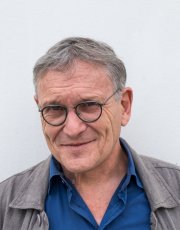
Haïti : on aid and reconstruction
Rony Brauman & Fabrice Weissman
One year after the earthquake in Port-au-Prince, a number of observers and actors are questioning the international aid : reconstruction is at a standstill, homeless people are still facing the same situation and the deadly cholera epidemic reminds us that international aid has not helped to improve the very poor sanitation system. This assessment, which is also made by Haitians, is a fact beyond dispute. Nevertheless, the responsibility of international aid (from states, NGOs, and the United Nations together), and the Haitian authorities deserve to be examined in further detail if we want to learn lessons for the future. The stakes in the post-earthquake emergency response are different from those in the (re)construction efforts and in the cholera outbreak - which is a different emergency from the earthquake and has little to do with it - raising other questions.
The emergency response
The emergency response is composed of three key elements: medical care, food and drinking water, and shelter - all these elements must be supported by a strong logistical set-up for the rapid deployment of rescue teams and material. Recollections come to mind of general mayhem and floundering coordination attempts by the government and UN agencies. Although there was indeed widespread confusion, rescue operations -medical care in particular- were set up within hours of the catastrophe, and grew over the following two weeks into the largest ever aid operation, despite access difficulties (airport destroyed, roads obstructed or damaged, public administration incapacitated). Tens of thousands of victims of the earthquake were treated in precarious conditions at first, and then in rather good conditions considering the context, thanks to the inflow of dozens of medical and surgical teams.
The supply of water, which before the earthquake was provided by a dynamic private sector, was quickly functioning after January 12th, notably thanks to the financial support of international organisations. Note that going back to "normal" didn't mean going back to accepted "standards": water quantities have always been limited and water treatment by reverse osmosis doesn't prevent post distribution contamination.
Supply and distribution of food have been chaotic. A retrospective survey could help us to better understand certain failures and how to prevent them, but we can nevertheless hazard an initial appreciation that food supply was acceptable considering the scale and unexpected nature of the disaster. It should be noted that security issues quickly became a major element in public speeches, as was the case after Katrina in 2005 in New Orleans. In both cases, people searching and collecting items and isolated cases of violence were qualified as "looting" or "riots" and stressed as more reasons to call for a military presence. This need was not obvious to many Haitians and NGO (at least MSF) members, just as it had not been the case for people living in New Orleans.
The obsession for order, under the guise of security and efficiency, can be seen through the many declarations concerning coordination of assistance (the organisation of clusters based on UN agencies), as well as the deployment of armed forces (Minustah and the US army in this instance). If it is true that the flow of NGOs and the multiplication of initiatives added to the existing mess, as in any other emergencies strongly covered by the media, it should be noted that only a government deciding to conduct an authoritative screening of aid proposals can solve this problem. Burma did it recently, and has not been given any credit for it, which is understandable. "Chaos is the other name for liberty", said Paul Valery. In any event, extremely costly measures have been set up to coordinate and maintain order, their basis unhindered by any questioning on their validity - considered as obvious.
The shelters given to the victims represent one of the failures of the emergency operation. They were distributed with delay, and the tents and plastic sheeting do not provide a strong protection against rain and cyclones, they don't last long (6 months for tents) and offer poor hygiene conditions, a lack of intimacy and comfort that are incompatible with the length of stay of the victims. The history of natural catastrophes reminds us that the definition and implementation of reconstruction policies (zoning regulations, call for bids, building, etc.) takes at least a few years. The victims reoccupy the space and rebuild shelter long before urbanisation plans have been decided. In Haiti, the absence of a land register and the weakness of the authorities made it clear that the process would take a long time and that meanwhile the victims would have to manage with the little means they had. The kind of shelter proposed by the international community is not adapted to this situation. Other possibilities exist - wood, sheet metal, that may be disassembled, prefabricated, or technological innovations - proposed by UN Habitat, specialised NGOs and consultants. These solutions allow for a more flexible use of materials, that enable families to resettle somewhere else if they wish to (because, for example, camps are crowded or land rights uncertain). Looking at this from a public health point of view, we must realise that giving the means to sleep (especially when it rains) should be a primeval goal that comes before fighting improbable epidemics.
(Re)construction
It isn't about building in a desert but a sum of political decisions, choices, and implementation that take place in a society whose structures and dynamics have not been erased by the earthquake.
A year after the earthquake, it is not very surprising that reconstruction has hardly or not at all started and the city is still full of rubble. It took two years to remove the rubble from the World Trade Center in New York. In the areas struck by the earthquakes in Italy in 2009, Pakistan in 2005, and Iran in 2003, most inhabitants still live in precarious ‘temporary' shelters or accommodation, waiting for their homes to be rebuilt. Indonesia completed major building programmes within 5 years in Aceh (coastline, houses, roads, schools, hospitals, etc., so that according to the press, the consequences of the tsunami are no longer visible), and is an exception in that matter, which can be explained by the determination of the central state and the efficiency of its administration. Those elements do not exist in Haiti. For UN diplomats this handicap is the result in the incapacity and the dubious morality of the Preval government. For Larsen, the Minister of Health, it is the will of the UN and international donors (especially the US) to impose a neo-liberal development model (through international experts appointed to work alongside the government) that is to blame for the paralysis of the system. Larson is partisan to a health system based on the Cuban model which relies on mixed care (private/public) and says that the health development policy based on the recapitalisation of the private sector was imposed to him.
In any event, the lack of voluntarism and efficiency of the administration cannot be overcome by the UN. It has neither the legitimacy nor the means to replace the failing public sector and implement reconstruction policies (as these policies would only draw on the advice of international experts). Aid actors should adapt their policies accordingly - in other words, ask themselves how to improve the day-to-day life of Haitians taking into account the uncertainties in the reconstruction and not dream about transforming the Haitian society for them. The "republic of NGOs", which has been criticised by many Haitian intellectuals, is the symptom, not the cause of the failures of the Haitian authorities.
Cholera
As of 1 January, 3600 deaths have been reported and 171,000 cases. It should be stressed that the epidemic has no link with the earthquake: it started in a region and in a population that has not been affected by the earthquake, and it has not spread through areas where displaced people lived, rather it struck the slums. Aside from areas in the North, the number of new cases has been decreasing in the past few weeks and mortality is now less than 2%. The main actors that responded to the epidemic were Cuban doctors and MSF, treating over 90% of the cases.
It is highly possible that the epidemic was due to the inopportune release of infected excreta coming from the camp of Nepalese UN peacekeepers in Mirebalais. On 6 January, the UN decided to send a group of experts to determine the origin, following conclusions made by French epidemiologist Renaud Piarroux. Depending on the hypothesis that is confirmed (that it is an imported epidemic or due to the climate), the means and chances to get rid of the epidemic on the island are different. In any event the weakness of the reaction of the international community and the failure of the WHO's epidemiologic monitoring system should be noted (see Marie-Pierre's Allié's editorial).
Sanitation is a major issue in Haiti, and this was true long before the earthquake. Victims benefited from the installation of latrines and water treatment systems, which were previously non-existent in slums spared from the earthquake. The fact that camps have been less affected by the epidemic tends to confirm the relative efficiency of the sanitation measures that were adopted. The better nutrition condition of disaster victims can also explain their greater resistance. But what was possible to do in an emergency in the camps is not possible in the slums. Whatever the specific causes of the epidemic may be and the public health policies to be adopted are (information, vaccination, health centres), it should be emphasized that cholera will only disappear when a water treatment plant is built and sanitary control of water distribution is set up. International aid can contribute to achieve this, but cannot do it on its own.
In conclusion, emergency international aid has helped the victims of the earthquake and can be considered as a "success", apart from providing adequate shelter. The stagnation of reconstruction creates many difficulties for the victims and is due to the scale of the task and the weaknesses of public structures in Haiti such that the international aid system cannot compensate.
To cite this content :
Rony Brauman, Fabrice Weissman, “Haïti : on aid and reconstruction”, 14 janvier 2011, URL : https://msf-crash.org/en/blog/natural-disasters/haiti-aid-and-reconstruction
If you would like to comment on this article, you can find us on social media or contact us here:
Contribute


Add new comment